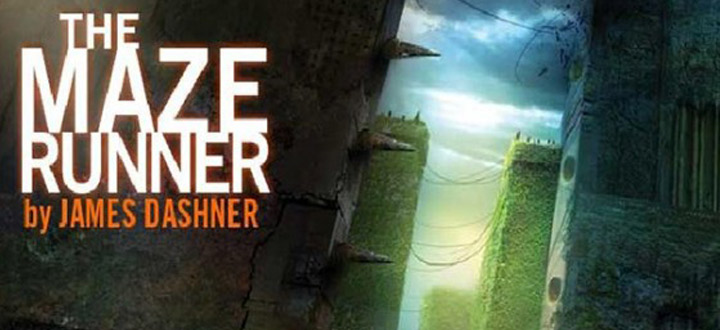Although dystopian novels are not a new genre, there are now a plethora of dystopian novels taking up the limelight of young adult (YA) literature, with many of these being turned into film adaptations. The latest dystopian YA novel to undergo this treatment was “The Maze Runner” by James Dashner, a book published in 2009. Though I read this book years ago, when it was still be considered a relatively new publication, I reread it in preparation for watching the movie—and it still stays amazing. The unique premise of the novel is expanded upon by brilliant characterization—and the few flaws present in the novel are either too minor to affect the suspense or are sacrifices made to preserve its overall brilliance.
The in medias res beginning of the narrative begins with the protagonist, Thomas, trapped in an elevator shaft, who has no memory besides his own name. When he is released from this shaft, a group of boys surrounds him, welcoming him to a place called the Glade. All of the boys have had the same introduction to this society as Thomas and have been able to form a community with rules governing the boys’ behavior. Many of these rules center around the Maze, which is a physical maze that surrounds the Glade on all sides. The most important of these rules is that no one unauthorized is allowed to enter the Maze, as deadly creatures, known as the Grievers, roam the Maze at night when the gates between the Glade and the Maze are closed—no one who has ever been locked out for a night has ever survived.
As the boys do not have their memories, they assume that a group of people, who they refer to as the Creators, have placed them inside the Glade. They believe that their only hope of leaving the Glade is to run the Maze, mapping it and figuring out a way to leave. However, Thomas’ arrival changes everything. The first girl to arrive in the Maze, Theresa, has a telepathic connection to Thomas and is sent up the very next day with a note that says that there will be no more people or supplies sent up. The book details how this society must change to fit the new circumstances.
The characterization of the teens in the book is excellent. With each dialogue or action the characters undergo, the readers gain a clearer understanding of who these characters really are. Though readers are not given a backstory for these characters, as they have lost their memories, they still receive sufficient information regarding their personalities based on what they say and do—and their characters remain consistent throughout the whole novel. The teens have also developed their own jargon in the Maze, using unfamiliar terms such as “Greenie” or “shank,” which enhance characterization by emphasizing the extent to which this society is separate from others.
Although there are flaws regarding pacing and symbolism, these glitches in the novel do nothing to affect its overall quality. The pacing of the narrative can feel slightly slow; however, this helps readers gain a better understanding of the characters as well as the complex situation that the novel bases its premise on. The slow pacing is also buoyed by the suspenseful action and developments that occur almost consistently throughout the novel, building to a climax near the end of the book. The slow pacing is one sacrifice that is made to help preserve the other brilliant qualities of the novel.
Dashner also makes an unsuccessful attempt to use symbolism in his novel. A character named Chuck is supposed to symbolize the wish of the Gladers to escape from the Maze, but Dashner is not able to fit this in well with the rest of the plot. Once again, however, such flaws are minor and do not detract from the reader’s enjoyment of the novel. Dystopian works of literature may require or be enhanced by symbolism. For example, George Orwell uses symbolism in “1984” to enhance his dystopian nightmare. However, in a modern young adult dystopian novel, such symbolism could have added to the book, but it was in no way a requirement that had to be fulfilled.
This book comes with my full recommendation and I would encourage all readers to read this book before watching the film! Go check out the film in the cinema! But before that, read Michael Kim’s Groovy Movies review on the film here!
Photo Source: scimafia.com

